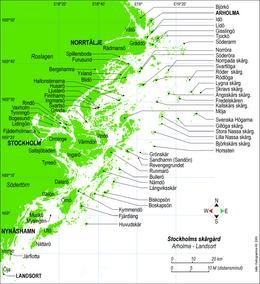
The Baltic Sea is a mediterranean sea of the Atlantic Ocean, enclosed by Denmark, Estonia, Finland, Latvia, Lithuania, Sweden, northeast Germany, Poland, Russia and the North and Central European Plain.

Nynäshamn Municipality is a municipality in Stockholm County in east central Sweden. Its seat is located in the city of Nynäshamn.

Värmdö Municipality is a municipality in Stockholm County in east central Sweden. Its seat is in the town of Gustavsberg, with a population of 9,682 (2005), on the main island at an elevation of 37 metres (121 ft).
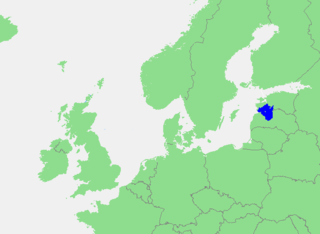
The Gulf of Riga, Bay of Riga, or Gulf of Livonia is a bay of the Baltic Sea between Latvia and Estonia.

The Archipelago Sea is a part of the Baltic Sea between the Gulf of Bothnia, the Gulf of Finland and the Sea of Åland, within Finnish territorial waters. By some definitions it contains the largest archipelago in the world by the number of islands, although many of the islands are very small and tightly clustered.

Märket is a small 3.3-hectare (8.2-acre) uninhabited skerry in the Baltic Sea between Sweden and Finland, with a lighthouse as its salient manmade feature. Märket has been divided between the two countries since the Treaty of Fredrikshamn of 1809 defined the border between Sweden and the Russian Empire as going through the middle of the island. The Finnish side of the island is part of the Municipality of Hammarland and is the westernmost land point of Finland. The Swedish part of the island is itself divided by two counties of Sweden: Uppsala County and Stockholm County.

Draget Canal is a Swedish canal in the municipality of Nynäshamn, county of Stockholm and province of Södermanland. Together with other natural channels, it provides a route between the ports of Nynäshamn and Södertälje avoiding the requirement to pass offshore of Landsort, although today it is only used by leisure craft.
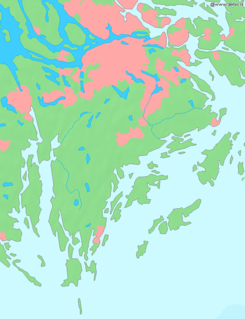
Södertörn is a roughly triangular peninsula and artificial island in eastern Södermanland, Sweden, which is bordered by:

Waxholms Ångfartygs AB, commonly referred to as Waxholmsbolaget, is a shipping company that is owned by Stockholm county council and is responsible for the seaborne public transport in the Stockholm archipelago and Stockholm harbour. The company, which is mostly tax-funded, carried about 4.3 million travellers in 2003, covering a region from Arholma in north of the archipelago to Landsort in the south.

The Bothnian Bay or Bay of Bothnia is the northernmost part of the Gulf of Bothnia, which is in turn the northern part of the Baltic Sea. The land holding the bay is still rising after the weight of ice-age glaciers has been removed, and within 2,000 years the bay will be a large freshwater lake. The bay today is fed by several large rivers, and is relatively unaffected by tides, so has low salinity. It freezes each year for up to six months. Compared to other parts of the Baltic it has little plant or animal life.

Grisslehamn is a locality and port located on the coast of the Sea of Åland in Norrtälje Municipality, Stockholm County, Sweden. The locality had 249 inhabitants in 2010.

Arholma is an island in the northeastern part of the Stockholm archipelago in Norrtälje Municipality. It is 5 kilometres (3.1 mi) long by 2 kilometres (1.2 mi) wide. It is the northernmost island in the archipelago before the Sea of Åland. The island is characterised by a picturesque combination of traditional wooden buildings, farmland, forests and rocky shorelines.

Sandhamn is a small settlement in the central-peripheral part of the Stockholm Archipelago in central-eastern Sweden, approximately 50 km (30 mi) east of Stockholm. Sandhamn is located on the island Sandön, which is, however, colloquially referred to as Sandhamn.

Ornö is the largest island in the southern half of the Stockholm archipelago, situated just north of the island of Utö. It belongs to the municipality of Haninge. The island is approx. 15 km long and 3–4 km wide.
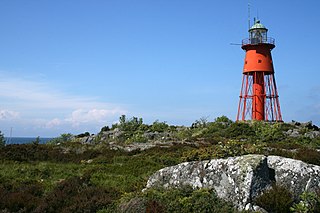
Svenska Högarna is a small group of islands and a lighthouse located east of Möja in the Stockholm archipelago.

Muskö is an island in the southern part of Stockholm archipelago, which forms part of Haninge Municipality, Stockholm County, Sweden. It is best known for the Muskö naval base. There are also two urban areas (tätort) on the island: Muskö and Hoppet.
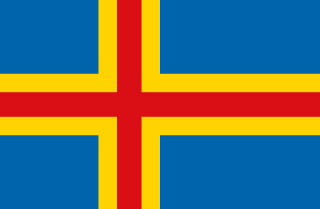
The Åland Islands or Åland is an archipelago province at the entrance to the Gulf of Bothnia in the Baltic Sea belonging to Finland. It is autonomous, demilitarised and is the only monolingually Swedish-speaking region in Finland. It is the smallest region of Finland, constituting 0.51% of its land area and 0.54% of its population.

The Strömma Canal is a short canal located near Strömma, on Värmdö island, Stockholm County, part of Värmdö Municipality in Sweden.

The Luleå archipelago is a group of Swedish islands in the north part of the Bay of Bothnia. They lie offshore from the city of Luleå and the mouth of the Lule River. A few of the islands have small permanent populations, but most are used only for recreation in the summer months. They are icebound during the winter.

Järflotta is an island in Stockholm archipelago, approximately 5 km (3.1 mi) south of Nynäshamn. Once separated from the mainland by a natural sound, this navigable route was rendered unusable in more modern times by post-glacial rebound and has been replaced by the artificial Draget Canal. The island is a nature reserve.
